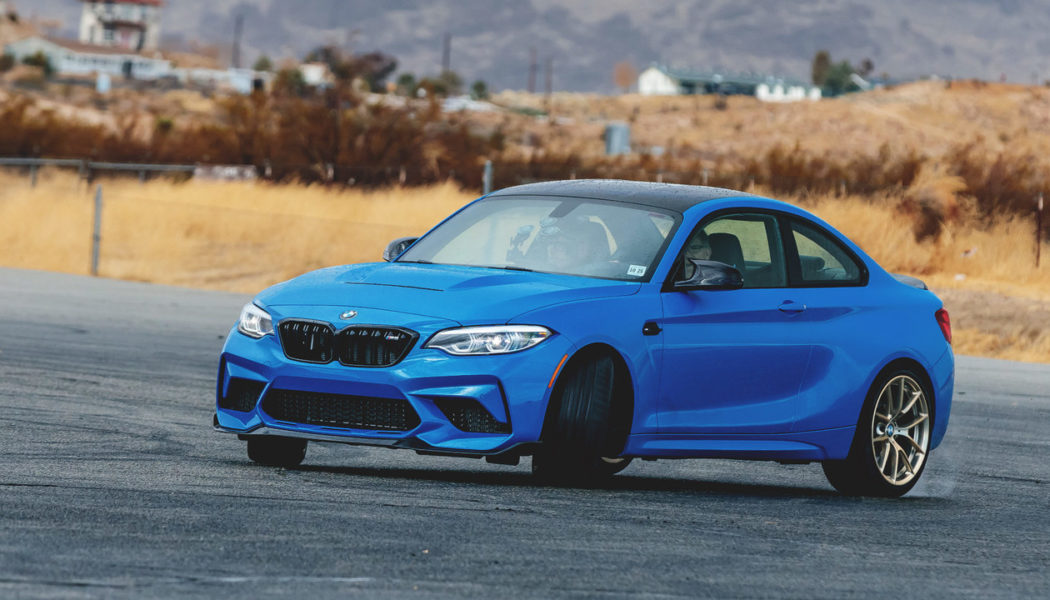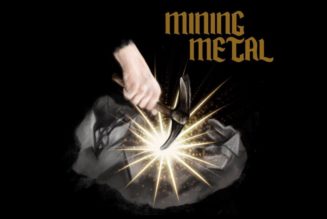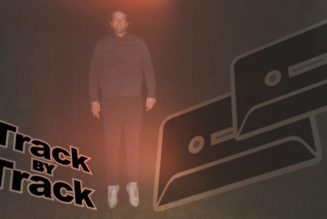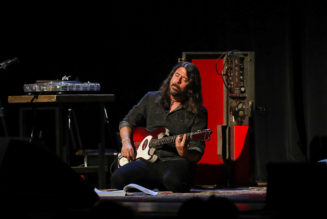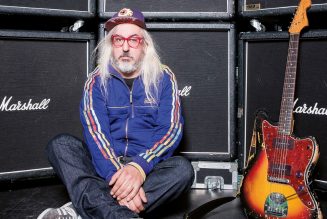There are so many things I wish I could do.
I’m not talking about a COVID lockdown to-do list. This isn’t about baking a certain variety of bread no one liked until boredom drove them insane. And I’m not talking about finally guilt-reading those classic novels I faked my way through in college. Faulkner is overrated anyway, let it go.
I’m talking about my exponentially expanding thirst for knowledge relative to my atrophying, middle-aged capacity to learn. It’s one of life’s cruelest jokes: When we finally want to learn, we realize our brains have retired early and moved to Florida. They play mahjong with the girls on Fridays and do the USA Today crossword each morning so they can “stay sharp.”
I want to do simple math without a calculator. I want to speak fluent Spanish. I want to skate like an NHL player. I want to play sitar like Ravi Shankar (or at least like George Harrison). But there’s one skill sitting firmly in first place on my leaderboard of knowledge.
I want to be an expert driver. I’m not talking about nailing a tight parallel park; that’s something every licensed driver should have mastered. If you haven’t, get off the damn road.
I’m talking about the kind of driving I’m often asked to do as a host of Top Gear America, about having exceptional car control and courage as well as the illusory superiority complex common in all world-class drivers. I yearn to feel as confident as my Top Gear America co-hosts Jethro and Dax when they drift a Lamborghini Huracán around a corner at speeds of bonkers mph.
I’m unusually poised to achieve this goal having had at least enough natural ability to land the job on TGA. The only other thing I have in my favor is an obsessive focus. When I’m set on doing something, I can be—and please don’t pardon the fantastic pun—very driven (thank you, I’m a professional comedian).
So, I Zoomed the nerds at MotorTrend and lorded my TV and film stardom over them until they rented me a track at Willow Springs International Raceway. While they politely tried to remind me they are technically my bosses, I scratched my chin with one of my many Emmys and agreed to write a Pulitzer Prize-worthy article about my experience. What a treat for them! They were so excited, they threw in some cars and asked resident racing champion and performance driving instructor Randy Pobst to lend a hand.
The day was set, and my journey to driving expertise had begun, but not without one significant emotional hurdle: I’m not good with teachers. I resent needing them. I want to pick up a guitar and know how to play “Sultans of Swing” (or at least a George Harrison song). I yearn to be a savant. It’s an ugly corner of my psyche that speaks to a general impatience and restlessness I wish I had a name for. For now, we’ll call this ugliness “Bob.” Rob is a nice guy … Bob is an asshole.
When I do succumb to the agony of being taught, I yearn for my teacher to utter a single word that unlocks some chest of hidden skill—and I’ll be damned if it didn’t come close to being just that. Pobst was as close to that kind of teacher as I’ve ever had. My Mr. Miyagi. On wheels.
Randy thought the 2021 Mazda 3 2.5 Turbo was a good car to use for my timed laps; it handles well with all-wheel drive but also isn’t a diabolical handful at speed. After setting a reference lap time of 2 minutes, 4.5 seconds around the TGA test track on the Streets of Willow circuit, I was ready for my first lesson: a simple out-of-car demo. We expected rain, a bad thing on any track. And it’s even worse if your first lesson is an out-of-car demo. Luckily the skies were clear, save for the cumulus clouds formed and reformed by the strong desert wind. All I had to complain about was the 45-degree temp, frigid by California standards.
Outside and shivering in the wind, Bob was impatient with the MotorTrend behind-the-scenes crew making us do on-camera snippets before Randy’s first lesson. Randy called this chapter “Simple Tap Dancing” (another thing I’d love to be able to do). He introduced it as a way to understand the role weight plays while driving at a high-performance level. Bob threatened to appear and cry about all the books he’d read on the physics of weight while driving. But Rob had to admit I’ve really only half-understood it all. There’s nothing like a few mind-numbing diagrams on body roll to put you right to sleep.
Randy told me to extend my right foot, tap it to the left, then tap it to the right. Then he told me to put all my weight on that foot and replicate the action. I couldn’t, of course, and Randy dropped the first of two Miyagi-bombs: Your weight is the brakes, and your foot is your traction.
Boom. He’s got me now. I get this guy. Front tires have better traction when they’re weighted down. I get it. Then Randy asked: “What steers the car?”
Easy. “The steering wheel!”
Randy paused. “Sure, but whose responsibility is it to steer the car?”
“Oh. It’s me! I steer the car.”
Randy spoke next as if to a third grader, a position to which I had been effectively reduced.
“No, the front tires. The front tires turn the car. Right?”
“Riiiiiiiiiiiight!”
Two things became clear:
- I’m a dumbass.
- To achieve the grip needed to turn a car at high speed, you must first apply the brakes.
Again, that’s something I knew intellectually. But sometimes you have to have your adult pride stripped in order to really learn the simplest of things in a practical sense. That’s why you set a braking point before a corner and continue braking into it. Now I was no longer going through the motions, and I was excited for my next lesson: the skidpad.
On the pad with Randy driving—we switched to the rear-wheel-drive 2020 BMW M2 CS for this exercise—he treated me to a balletic display of controlled skidding and drifting. His skill on the pad was glorious. I was elated, but Bob was pissed: I need to be able to do this just as well—or at least as well as George Harrison, who I assume was an awesome driver.
But when I switched places with Randy, it was like I hadn’t learned a thing, spinning the car around like a drunk modern dancer. I may have had some fleeting successes, but it was mostly failure, prompting Randy’s second and literal Miyagi-ism: “Wax on, wax off. ” Meaning I’d have to keep doing this over and over to gain proficiency. Rob got it. Bob did not.
We spent the rest of the day on the track, with Randy repeating a mantra until it became ingrained in my practice: “Look where you want to go. If you want to turn left, look left. “
After a few hours, during which we drove the track in the more lively, more capable BMW, I was exhausted. Randy described the experience as a “firehose of instruction” and, to my great pride, said I was a natural. All that remained was for me to do my final timed lap in the Mazda to see how far I had come in a single afternoon. Randy was confident I would shave 10 seconds off that 2:04.5 time.
But then those beautiful cumulus clouds finally broke open and soaked not only the tarmac with rain and hail but also doused Randy’s confidence: “Maybe 5 seconds.”
I did some practice laps on the sodden track. It was a class on finding and nudging the edges of the Mazda’s stability control. I found myself drifting the entire course, repeating Randy’s mantra until I was ready for my final lap.
Randy and I were bullish as I crossed the finish line. He suggested I do another, but I was completely drained. I’ve described this brand of exhaustion to other drivers, and they nod knowingly, eyes wide, having felt the physical and emotional toll of working hard behind a wheel. Randy didn’t press further when I said something along the lines of, “No effing way.”
The nerds manning the timers were as cheerful as a middle finger. They conferred privately, their expressions lacking more than just smiles. Oh, no. This had been all for naught! I would continue to lose to Dax and Jethro, and I would disgrace Randy Miyagi.
I was Googling for cliffs I could drive my own 911 off of, no longer feeling like I deserved the car, when they handed me a printout. A graph. Graphs make me want to hug my mother and cry. I was pretending to study it, trying to find anything resembling a time when I heard, “Wow! Seven seconds!”
It was Randy, who had appeared at my shoulder. Of course he’s good at graphs. He pointed at some numbers: 1:57.55. I had shaved 7 whole seconds off my time! I suddenly felt like a driver. I suddenly felt as confident as Jethro and Dax when they drift that Huracán.
In retrospect, with a few weeks separating me from that day, I prefer to think about it like this: It was Randy Pobst, driving professor emeritus, who found those 7 seconds. I’m not usually able to listen to teachers, but with Randy, listening was secondary. With Randy, I was doing. With Randy, I was different, and Bob was a mere whisper. I now appreciated that magic only happens if you keep at it, if you always practice. And because of Randy, I feel even luckier and more grateful to have Top Gear America, where I can practice almost every day.
But mostly, all I really have to do is look where I want to go—and now I know I’ll get there.
_________________________
Randy Pobst’s Driving Tips
Learning to drive on the limit is indeed much like drinking from a firehose. There is a lot to ingest, so I like to keep it simple and basic during early lessons.
Weight management is a driver’s primary job. When you transfer weight to a tire, its grip improves, just as we demonstrated with our foot. Slide lightly, no grip; lean on it, and it sticks well. The same is true for your tires. When you use the throttle and brake pedals, you transfer weight: Slow down, and it moves forward; speed up, and it moves rearward. When weight moves rearward, the front end lightens, and the car will not steer as well. When you brake and put more weight on the front tires, it steers better.
As you enter a corner, continue slowing down—either with some brake pressure or by coming off of the throttle—until the car is aimed to exit the corner, then apply power. Always be aware, tiny changes with brake or throttle make a big difference to where a car goes. Make sure you are very smooth as you release the brakes and begin to add power.
As Rob learned during our lessons, you go where you look. When entering corners, always look to the inside edge of the road ahead, and then through the corner. Due to humans’ natural hand-eye coordination, looking ahead into a turn will cause our hands and feet to tend to do the right thing.
If you ever lose control and spin, jam on the brakes and hold the pedal down until you stop. This is your safest move, as it stops the car as quickly as possible, and it keeps your foot off the throttle. If you’re driving a car with a manual transmission, the rule is: When you spin, both feet “in.” Meaning, push the brake and clutch pedals, and keep them pinned until you stop.
Of course, just because a car’s rear begins to slide doesn’t mean a spin is the inevitable outcome. To correct a slide, use the steering wheel and not the pedals to recover, and always look ahead to where you want to go. Do not look where the car is headed; your vision and an ability to think ahead into a corner is critical. Remember: Our natural survival instincts make us look at what we are afraid we will hit, so always keep your eyes on where you want to be. —Randy Pobst
____________________
Go on more adventures with Rob Corddry and his Top Gear America co-hosts Dax Shepard and Jethro Bovingdon, along with 8,000+ episodes of other hit car shows, only on the MotorTrend app. Sign up now for a weeklong free trial on us!
